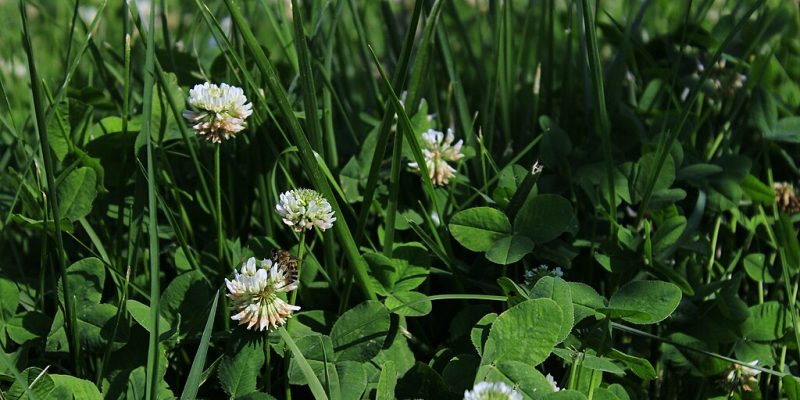
It is early summer and the lawns appear lush and green in Gardiner. There is, however, another way to describe that lawn-scape: unhealthy. While a conventional lawn offers a standardized look and management regime, an expanse of green lawn can also be an unbalanced artificial environment where the birds and the bees cannot thrive. Current lawn maintenance practices often create pollution and expose us to harmful chemicals. Turning lawns into a diverse habitat, reducing pesticide and fertilizer application and mowing better are keys to a healthier lawn-scape. To power a transition to healthier lawn and landscape practices for both do-it-yourselfers and professionals, there are an increasing number of organizations providing information, resources, and support.
A mantra and movement that has gained a following for lawn change is “No Mow May”. Started by Plantlife, an organization based in the UK, this practice allows early season flowering plants and wildflowers to get a head start in the spring, providing nectar at a critical time in the annual growth cycle. Wild Ones, a non-profit native plants and landscapes organization with a new Mid-Hudson group, encourages switching turf grass for native plants. Their website provides native garden designs, developed specifically for non-professionals and novices, including installation instructions and tips. Both organizations encourage using at least two different heights of native plants in your lawn to provide a variety of sources for nectar, seed, and habitat for pollinators.
Healthy Yards is a Westchester NY based organization that promotes “mowing high” and avoiding chemical pesticides in their “10 Healthy Steps” to create a healthier yard environment. They also encourage reducing lawn to what is only needed for entertaining, pets, and play areas. Their website suggests options for replacing remaining lawn such as rain gardens, ground covers, and meadow grasses.
For the areas that remain as lawn, Cornell CALS Turf Program has “Four Steps to Success” for keeping an attractive lawn an environmental asset. One step is to use only sharp mower blades. Dull blades increase fuel consumption by as much as 20% and they leave the tips of the grass blades ragged and brown. The Turf Program recommends mowing no lower than 3 inches for good root growth and to maintain consistent moisture. Consistently mowing lower than recommended can create bare spots and stresses root structure. Maintaining your lawn through better mowing practices will mostly eliminate the need for fertilizer application.
Many Gardiner residents use a trusted landscaping service to mow regularly and to assist with lawn maintenance throughout the year. Professional landscapers now have more tools and resources for implementing a healthier management program for your lawn. The current generation of electrical landscaping tools includes commercial grade stand-up and seated mowers with a longer battery life and faster recharge. As professionals replace equipment, the option to go electric is now feasible. Electric equipment greatly reduces maintenance costs and creates a healthier environment by decreasing air pollution, reducing gas consumption and eliminating much of the noise that lawn maintenance with gas powered equipment creates. Let your landscaper know that you want a healthier yard and discuss it with them. After all, a healthier yard is a better environment for landscapers, too.
